Winning the LEAP and Berblinger Prize Writing for Plane & Pilot magazine, Jim Lawrence opined, “As an industry, electric flight is still in toddler mode. Batteries provide, pound for pound, a mere fraction of the energy density of gasoline. Therein, as the Bard said, lies the rub: The culprit is weight, simply because one pound of avgas has roughly 40 times the energy delivery of a pound of battery. For electric aircraft (and other vehicles) to become common, battery efficiency will need to double, then double again, and double again. “To spur recognition and development, several major awards and competitions now offer substantial money prizes. On the last day of this year’s Aero e-flight-expo in Germany, the Berblinger Flight Competition divided |100,000 ($142,604) among three proven aircraft, each with a unique application of electric power: the elegant, single-seat Lange Antares 20E self-launcher sailplane (the world’s first certified electric); Eric Raymond’s record-setting, solar-powered Sunseeker; and Manfred Ruhmer’s Elektro-Swift, an ultralight flying wing with streamlined pod and folding pusher prop.
Sidebar
Composite Fuselage as “Battteries?”
Composite Fuselage as “Batteries?” A June 6, 2011, article in the New York Times reported that researchers at Imperial College London, the Swedish Institute of Composites, and Volvo are looking to build auto bodies with carbon composites that can serve as capacitors (devices that hold an electrical charge) that could store more electrical energy than batteries. The dual-function materials could also make electric vehicles and hybrid vehicles lighter. To enable the composite materials to store electricity, the resin that binds the carbon fibers is laced with lithium ions; the fibers serve as conductive electrodes for this type of charge-holding capacitor. At present, the research teams have a distance to go to gain such efficiencies. The work continues and funding appears secure. If future composite structures could store energy as efficiently as lithium-ion batteries, an electric vehicle would require only the roof, hood, and trunk lid to be made of such materials to achieve an 80-mile range, researchers said.
Energy Density Primer
Energy Density Primer Perhaps it is helpful to understand the significant technical challenge electric flight still faces by comparing the energy densities of gasoline and batteries. Jim Lawrence (also see “Winning the Berblinger Prize and LEAP” sidebar) wrote, “Lead-acid batteries like those in boats and cars have been around for 150 years. They’re cheap and relatively environmentally friendly to fabricate and recycle, compared to lithium-based (Li-Ion-lithium-ion, and LiPo – lithium-polymer) batteries. Lead-acids store around 6% the energy density of gasoline. Running the numbers tells us it takes 167 pounds of batteries to hold the same energy as a single pound of gas. “Lithium batteries as typically used in cameras, cell phones and radio-control models store around four times as much energy as a lead-acid battery, but cost several times more per watt-hour. That still means an airplane needs to carry more than 40 pounds of batteries for the equivalent energy of a single pound of gas.
Icon’s Mission of Outreach
Icon’s Mission of Outreach ICON Aircraft calls itself “a consumer sport plane manufacturer.” Kirk Hawkins, an accomplished engineer, former U.S. Air Force F-16 fighter pilot and avid power sports enthusiast, founded the company. After learning of the Federal Aviation Administration (FAA) major regulatory changes in ’04 that created the light sport aircraft category and sport pilot license, Hawkins conceived his enterprise in ’05 while attending Stanford University Business School. Since then, ICON Aircraft’s sole purpose has been to bring the freedom, fun, and adventure of flying to all who have dreamed of flight, whether they are existing pilots or other recreation enthusiasts. ICON Aircraft believes that consumer- focused sport aircraft can do for sport flying what personal watercraft did for boating. “ICON aircraft are not only designed to deliver an amazing and safe flying experience, but also to inspire us the way great sports cars do,” explains the company. A venture-backed, early stage company out of Silicon Valley, ICON Aircraft based its operations in Southern California, which is a hotbed for aerospace engineering, automotive design, and power sports activities.
The Evolution of Revolution
Like other start-up success stories, this tale has a familiar beginning. “It all started with two guys, Abid Farooqui and Larry Mednick,” begins the history lesson. The two started flying trikes a decade ago after discovering they preferred weight-shift control to conventional aircraft where each had started. They didn’t start out as partners.Farooqui wanted to run a flight school and Mednick, who’d given up freestyle jet skiing and street bike riding, just wanted to fly trikes. Giving instruction hour after hour to a variety of students, Farooqui began to discover limitations in the trikes he could buy for his school. Mednick was finding something similar himself. They loved their trikes, but they could envision a machine that would better serve their interests. Their learning experiences left each of them upside- down hanging by their seatbelts after a mishap that slowly but surely shaped the design that was evolving in their minds.
FAR Part 91.205 (required equipment for IFR)
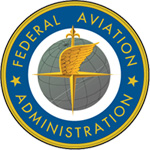
Flying the Xenos
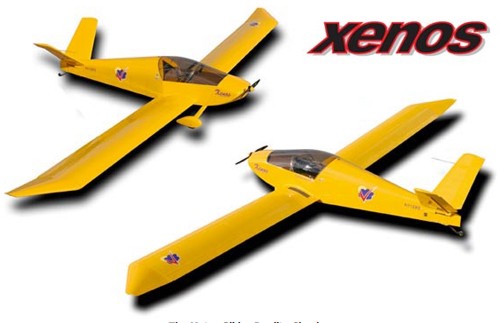
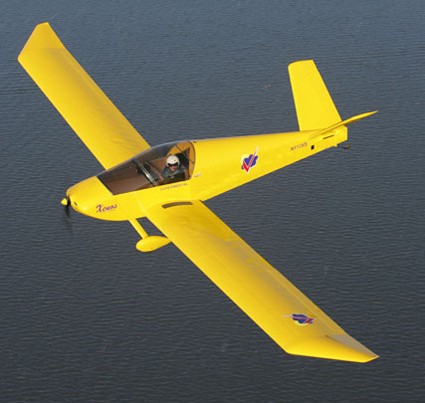

Author Murry Rozansky did a fine job of evaluating the Xenos but since I had the chance to go for a late-in-the-day flight with Jeremy Monnett, I wanted to add just a few words on the company’s motorglider. The soaring pilot in me just had to see how the long-winged version of the Sonex felt aloft. After landing with John, I flew with son, and Sonex general manager, Jeremy, in the company’s Oshkosh-based Xenos. The one Rozansky flew is based in Tehachapi, California with Sonex engineer, Pete Buck. The Wisconsin Xenos used the same AeroVee engine as the Waiex whereas the Xenos out west is powered with a Jabiru 3300. One notable difference is the ailerons, which have much more span and much less chord than the Waiex. And naturally, a long gliding machine like this adds spoilers to the control mix. As we taxied out, Jeremy tended not to use the brake; he just retarded the throttle, which seemed to slow down taxi speeds quickly.
Mike Z Sport Aviation

Mike Z Sport Aviation If you live in Central Florida and pursue recreational aviation, odds are you know or have heard of Mike Z. His last name is Zidziunas and now you know why everyone calls him “Mike Z.” Mike is well known in the hang gliding community and among ultralight enthusiasts. He has wide experience, including sail repairs (the same kind of work sometimes needed by hang glider pilots), being an A&P mechanic and LSA Repairman with plenty of knowledge of aircraft repairs. More than being qualified himself, Mike’s Plant City, Florida, airport operation has been the host quarters for one of Rainbow Aviation’s LSA Repairman courses. Many of the people who have come to know Mike took flight lessons from him or had maintenance done by him. Some LSA enthusiasts know he assembles airplanes for Sportsplanes.com, specifically models like the Breezer II, the Skylark, the C-42, and others. Mike has also worked closely with another Central Florida legend, Jay Kurtz, a DAR who attracted attention last year by gaining ELSA approval for a Van’s RV-9 done as lightly as possible so that it could qualify as a light sport aircraft.
SLSA Service After the Sale
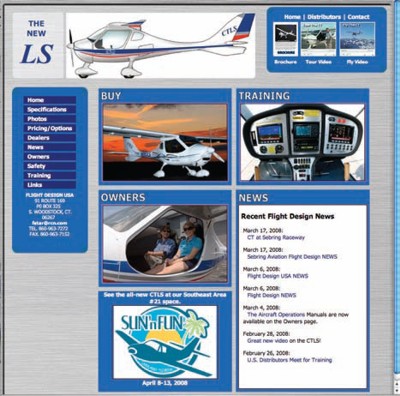

Most folks have probably never heard of ASTM International document F2295, Continued Operational Safety Monitoring of a Light-Sport Aircraft. But Tom Peghiny, president of Flight Designs USA, is intimately familiar with it. As the former chairman of the ASTM Airplane Committee, Tom was a driving force behind requiring SLSA manufacturers to face up to service after the sale and airworthiness monitoring. According to Tom, “The SLSA industry will not survive unless we take our after-sale commitments seriously. SLSA Service After the Sale Flight Design USA has a dedicated safety and compliance manager plus a number of procedures in place to make sure customers get the service they need.” Flight Design USA initiates its after-sale quality control by starting in the beginning. Any individual involved in the assembly of CT airplanes imported into the United States must undergo assembly compliance training through Lockwood Aviation’s Aero Technical Institute. Thus customers are assured that their CTSW or CTLS meets all original manufacturer quality standards.
A Second Opinion; The Man from TruTrak Flies the ‘

Jim Younkin is the man behind TruTrak Flight Systems, a source for autopilot devices in recreational aircraft. He’s also an experienced pilot of his RV-9 and other aircraft. Here is his report of the S-19. “I found myself comparing the S-19 with our RV-9, a highly regarded aircraft. The aileron response or feel is comparable to it. When slow flying at the edge of a stall, directional control is positive, and even in the stall it remained so. “The large flaps are very eff ective so as to permit a steep approach without excessive speed buildup. Finally, I was pleased to note that both the brake and a free-swivel nose gear were employed. This is much better in crosswinds than the combination of a hand brake and steerable nose gear found in most of the LSA I have flown. Another feature of value in the crosswind situation is that it has sufficient cross-control response (slip).
True American Champ
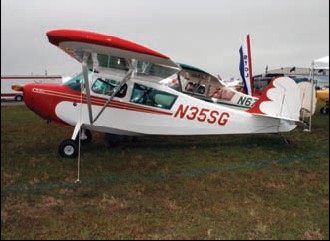

Are you uncertain about the certification used for LSA? Do you find imported S-LSA too expensive? Are you struggling to accept an engine such as Rotax, with its liquid cooling, 5500 max rpm range, and gear-driven prop? If you ask yourself these questions, you could choose the Luscombe featured in this article or select the newest entry from American Champion Aircraft, the Champ, which sells for under $90,000, or $100,000 nicely equipped. Like the LSA-8, the Champ is a familiar aircraft certificated under traditional federal aviation regulations. Luscombe can boast of meeting CAR4a but, technically, it’s certificated under ASTM standards. As with the Luscombe, a Continental O-200 powers the Champ. For some, this is enough to suggest a purchase. One shortcoming is that the Champ has limited useful load, given its empty weight of 920 pounds. Unlike an S-LSA approved under ASTM standards (such as the LSA-8), the Champ can weigh more than 890 pounds because American Champion continues to build its LSA-like airplane under Part 23 certification.
Cross-country LSA

Motorglider Soars and Cruises Cross-country LSA It may look like a motorglider or even a sailplane, as the Lambada is exceptionally clean and sleek with long, slender wings. But the Lambada is also a first-class touring machine in the LSA category. Recently, Urban Air USA demo pilot and gliding expert Jim Lee flew a Lambada from Melbourne, Florida, to Moriarty, New Mexico. His mission was to conduct a series of demo flights for the newly certified motorglider. Total statistics for the Melbourne-to-Moriarty run prove the efficacy of a motorglider LSA. Total distance, 1,550 nm; total time en route, 16.2 hours; average ground speed, 96 knots (110 mph); fuel usage, 57 gallons 100LL; fuel consumption rate, 3.5 gph at 5,000 rpm. The Lambada could have used 87-octane regular auto gas, had it been available, and the motorglider would have burned slightly less fuel. ¡°In an age of $3-a-gallon auto gas and with 100LL reaching $6 a gallon, cruising the country in a long-gliding Lambada looks pretty good,¡± indicates Urban Air USA importer, Joe Bostik.
The S-LSA Useful Load Requirement

The S-LSA Useful Load Requirement The FAA sport pilot/light-sport aircraft regulations define a light-sport aircraft; however, those limitations aren’t the only requirements that manufacturers must abide by in producing special light-sport aircraft (S-LSA). Recall that the FAA empowered the industry and community through ASTM International to develop consensus standards to regulate the design, manufacture, and production of LSA rather than FAA-mandated standards such as Part 23. FAR 21.190 requires that the aircraft be designed and manufactured in accordance with the standard. A part of the design standard is a useful load requirement. Currently that requirement is 430 pounds for fixedwing airplanes (land). That number was arrived at by allowing 190 pounds for each seat occupant (380 pounds for two-seat S-LSA), and one-half the horsepower in pounds (for example: with a 100-hp engine add 50 pounds). Accordingly, any fixed-wing S-LSA that has an empty weight of more than 890 pounds (with all options added) is being manufactured and operated in violation of the ASTM standard.
CubCrafters Debuts ‘Carbon Cub’ Proof of Concept
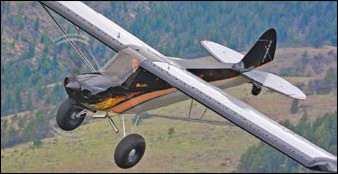

CubCrafters Debuts ‘Carbon Cub’ Proof Of Concept CubCrafters debuted its Carbon Cub proof-of-concept aircraft at the 2007 Alaska State Aviation Trade Show and Conference in early May. The company says the 220-hp aircraft is a platform for a host of new airframe construction materials, performance options, design improvements, and more powerful engine options. The aircraft does not currently meet light-sport aircraft certification requirements, but the company says the nearly 40 airframe parts made out of high-strength carbon fiber saved 250-300 pounds compared to a Super Cub with the same equipment. The project points toward several new aircraft possibilities for CubCrafters including a light-sport aircraft certificated as a factory-built airplane, a homebuilt kit plane, and/or a new FAA certificated airplane. For more information visit www.CubCrafters.com. Published in EAA Sport Pilot & Light Sport Aircraft Magazine
AERO LTD.

Aero Ltd. Based in Poland, Aero Ltd. was founded in 1994. The company’s mission is to bring to market an inexpensive two-seat aircraft for basic training and tourism. Tomek Antoniewski founded Aero Ltd. in Warsaw, Poland, and functions as the company’s CEO. He is also the lead designer of AT aircraft. He first constructed the AT-1 as part of a master’s degree thesis while in the Warsaw University of Technology’s Aeronautical Department. The AT-1 is a single-seat low-wing plane that accumulated 2,500 hours of flying time. In 1996, Antoniewski created the AT-2, using experience accumulated during the earlier project. Both projects led to the present-day AT-3. Aero built one AT-3 for flight testing and another for static testing. The prototype AT-3 has flown 1,500 hours in basic training missions in the Warsaw Aeroclub. The whole structure of the AT-3, which was the basis for the G-700S, was designed in CAD. To assist with the manufacturing of the AT line, Aero and Antoniewski have attracted several seasoned aviation professionals with years of design, manufacturing, and certification experience.
AeroTrekking
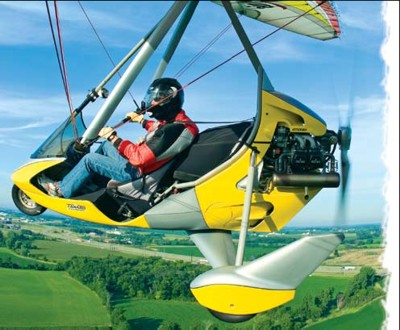

AeroTrekking With new partners from the software industry, 18-year ultralight and LSA veteran John Kemmeries has created the Southwest AeroTrekking Academy LLC. Instructors teach individuals how to fly weight-shift aircraft like the Tanarg or other Air Creation trikes, and they show students how low-level flying can be done safely. The purpose is to allow aerotrekkers to enjoy the beautiful landscapes of the great American southwest from altitudes that allow them to take in the scenery in a unique manner. Those who elect AeroTrek training embark on three levels of preparation: In level one flight training, aerotrekkers fly over dry lakebeds, short prairie grasses, hard sand, meadows, wide dry washes and other terrain that allow for obstruction-free landings. Ground schooling covers the rules of low-level flight to ensure that students are not violating airspace and visual flight rules. By level two, aerotrekkers are introduced to routes that require more sophisticated control inputs to land safely in a power-out or emergency situation.
About the author

The Technical Work of F37

The Technical Work of F37 Light sport aircraft industry stakeholders engaged in the ASTM standards initiative include manufacturers of airplanes (conventional fixed wing aircraft), powered parachutes, weight shift controlled aircraft, gliders, gyroplanes, and lighter-than-air. In addition, F37 volunteers come from the flight instructor community, recreational pilots, parts manufacturers, and the regulatory community. Committee F37’s work embraces: Minimum safety, performance and flight proficiency requirements. Quality assurance to install manufacturing controls confirming that aircraft meet design criteria. Completed aircraft production acceptance tests and procedures assuring that completed aircraft meet reported performance as demonstrated in the prototype aircraft, including design limits such as empty weight; center of gravity; performance specifications; controllability and maneuverability; longitudinal, lateral, and yaw stability; stall speeds; handling characteristics; engine cooling and operating characteristics; propeller limits; systems function; and folding or removable lifting surfaces. A plan for continued airworthiness, including methods for monitoring and maintaining continued operational safety, and processes for identifying, reporting and remedying safety-of-flight issues.
Before You Buy a Foreign-Manufactured S-LSA

Many aircraft manufactured in European and Eastern European countries are poised to enter the United States light-sport aircraft market as special light-sport aircraft (S-LSA) because the European microlight standards have, for years, allowed the manufacture of ready-to-fly aircraft that closely match the definition of an LSA. Like all LSA manufactured in the United States, these aircraft must meet the consensus standards established for LSA. In addition, the aviation authority in the aircraft’s country of origin must have a bilateral agreement with FAA, and the aircraft must be eligible for certification in that country. The manufacturer must also test fly the aircraft prior to shipping it to the U.S. Lastly, before the aircraft is offered for sale in the U.S., the dealer/distributor should already have certificated the aircraft as an S-LSA. (This applies to domestic aircraft as well.) As with all aircraft purchases, wise buyers will adopt a “buyer beware” attitude to make sure that the dealer/distributor will be able to provide after-the-sale services, including timely parts replacement.
Zlin Savage Cub
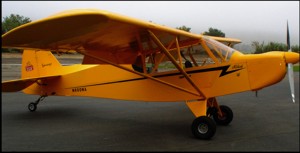

[UPDATED — May 2007: Savage Cub is now represented by Savage Aircraft Sales (www.savageaircraftsales.com) located at 6609 Northeim Road, Manitowoc WI 54220; or call (920)726-5260.] Is the concept of a renewed Cub a phenomenon that developed with the LSA rule? Actually, no. The Savage Cub has been in production since 1997. An Italian design team created the plane and first built the model in Italy. In 1999 production was taken over by Zlin Aviation S.R.O. in the Czech Republic, which has connections to Czech aviation pioneer, Moravan Aeroplanes, maker of the Zlin all-metal GA aircraft. [UPDATED — August 2007: Savage Aircraft Sales of Wisconsin took over from former distributor Bob West who used the name North American Sport Aviation. Savage Aircraft Sales is run by Julie & Keith Hartlaub. Savage earned S-LSA certification just prior to EAA AirVenture Oshkosh 2005 and is the only one of the three new Cubs to use Rotax powerplants, no surprise given the design’s origin in Europe where Austrian-based Rotax dominates the light aircraft engine market.


